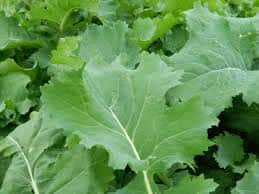
🥬 Kale/Rape 101: The Leafy Green Power Duo That Thrives in Every Garden
Who is Kale/Rape
Welcome to Gardening 101! Meet Kale/Rape, your resilient, nutrient-packed leafy friend from the cabbage family (Brassica oleracea and Brassica napus). Originating in the Mediterranean and Northern Europe, I’ve been feeding humans for over 2,000 years! Known for my rich, earthy flavor and nutritional punch—loaded with vitamins A, C, and K, calcium, and antioxidants—I’m often called a “super green.”
What makes me special is my adaptability. I grow in cool weather, can withstand light frost, and my leaves get even sweeter after a chill! I’m not just a salad ingredient; I’m a nutritious addition to soups, stir-fries, smoothies, and even chips. Whether you call me kale, rape, or leafy brassica, I’m here to fill your plate—and your garden—with life and strength.
My Ideal Growing Conditions
I’m a cool-weather crop, happiest when the temperature sits between 10–20°C (50–68°F). I don’t mind a light frost—in fact, it makes my leaves taste sweeter. However, hot weather can make me bitter and encourage early flowering.
I’m a deep-rooted plant, so I love loamy, well-drained soil with a depth of at least 30 cm (12 in) to stretch comfortably. My ideal soil pH is between 6.0–7.5. Enrich my soil with compost or well-rotted manure before planting—I thrive in nutrient-rich conditions.
I enjoy 6–8 hours of full sunlight each day but can handle partial shade, especially in warmer climates. Water me deeply once or twice a week, giving me about 2.5 cm (1 in) of water to keep my soil evenly moist.
You’ll find me thriving in raised beds, garden rows, or large containers—anywhere I can spread my roots and bask in the gentle sun.
How to Plant Me
Let’s grow together! You can start me from seed or transplants, whichever suits your garden style.
Seed Depth: Sow my seeds about 1.25 cm (½ inch) deep in moist, fertile soil.
Step-by-Step Guide:
- Prepare your soil with 5 cm (2 in) of compost or organic matter before planting.
- Sow seeds directly in the garden, spacing them 2.5 cm (1 in) apart, with 45 cm (18 in) between rows.
- Once seedlings reach 5–8 cm (2–3 in) tall, thin them to 30–45 cm (12–18 in) apart to give each plant room to grow.
- If you prefer transplants, start seeds indoors 4–6 weeks before the last frost, then move them outdoors once the soil warms to 10°C (50°F).
- Water me thoroughly after planting, and keep my soil moist while I germinate—usually within 5–10 days.
Feed me every 3–4 weeks with organic fertilizer like compost tea or seaweed extract. I don’t ask for much, just rich soil and steady moisture!
Caring for Me
I’m low-maintenance but appreciate a little love and attention. Keep my soil evenly moist—about 2.5 cm (1 in) of water weekly. Mulch around my base with straw or grass clippings to retain moisture, control weeds, and keep my roots cool.
Feed me every few weeks with compost or organic fertilizer. Too much nitrogen makes my leaves soft, so balance my diet with potassium and phosphorus for stronger growth.
Pruning isn’t necessary, but harvesting outer leaves regularly keeps me productive. Keep weeds away—they compete for nutrients—and watch out for pests hiding under my leaves. With consistent care, I’ll reward you with months of vibrant, tasty greens!
My Troubles – Pests and Diseases
Even sturdy greens like me have a few enemies, but don’t worry—nature has remedies!
Common Problems & Organic Fixes:
- 🐛 Cabbage Worms: These hungry caterpillars love munching on my leaves.
- Hand-pick them off early in the morning.
- Plant companion herbs like dill and rosemary to repel them naturally.
- Spray neem oil weekly to discourage infestations.
- 🍂 Black Rot: A bacterial disease that causes yellowing and wilting of my leaves.
- Rotate crops yearly—avoid planting me where other cabbages have grown recently.
- Remove infected plants immediately to prevent spreading.
- Keep my leaves dry—water the soil, not the foliage.
When and How to Harvest Me – Kale/Rape 101
I’m ready for harvest 55–75 days after planting. Pick my outer leaves once they’re about 20–25 cm (8–10 in) long, leaving the inner ones to grow. For baby leaves, harvest earlier—around 30 days after sowing.
Each plant can produce up to 900 g (2 lbs) of leafy goodness over several weeks, so harvest often to keep me thriving!
Storing and Preserving Me
After harvest, rinse my leaves gently and pat dry. Store me in a perforated plastic bag in the refrigerator, and I’ll stay fresh for up to 10 days.
For longer storage, blanch my leaves in boiling water for 2 minutes, cool quickly in ice water, then freeze. I’ll keep my color, flavor, and nutrients for up to 6 months.
My Best Friends
- 🧄 Garlic: Repels aphids and other pests naturally.
- 🥕 Carrots: Help aerate the soil and give my roots space to breathe.
- 🌿 Herbs like dill and rosemary: Attract beneficial insects and deter pests.
Something Fun About Me
Did you know that I was once considered food for royalty? My leaves were served in medieval feasts, and today I’m a global symbol of healthy eating. You can bake me into chips, blend me in smoothies, or even use my blossoms as garden decoration!
You & Me Could Be Good Friends
I’m strong, versatile, and packed with nutrients. Whether you grow me in a pot or a full garden bed, I’ll reward you with endless harvests and hearty meals. So why wait? Let’s start your Kale/Rape 101 journey today—your body and garden will thank you! 🌱